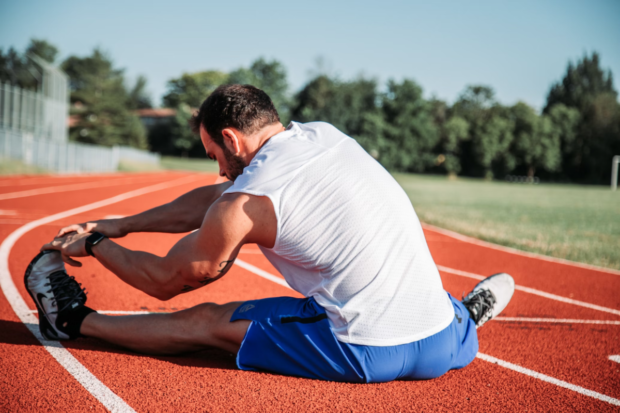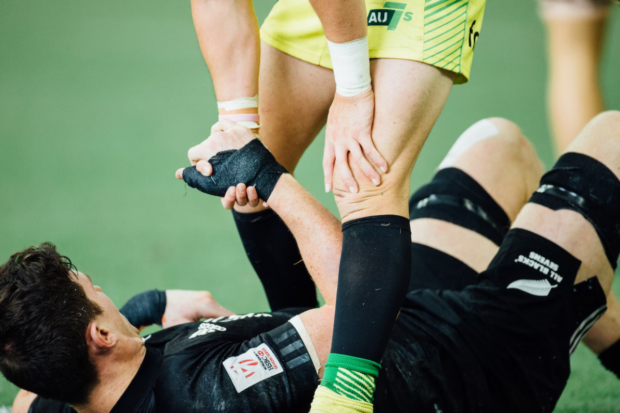Why Injury Rehabilitation is Vital for Resuming Your Sports Journey
Do you feel like you have hit a wall in your sports journey? Have the injuries that come along with training for and playing sports been becoming more persistent lately? Understandably, this can be discouraging and overwhelming. It’s easy to wonder if it’s time to quit or take a break, but doing so could put you further away from your ultimate goal. Instead, an alternate strategy may be injury rehabilitation – understanding what is wrong physically and how best to correct the issue to return to the court or field as quickly as possible! Keep reading ahead to find out why injury rehabilitation is vital for resuming your sports journey.

Understanding Legal Repercussions From Your Injury
Understanding the legal repercussions of your sports injury is an essential aspect of navigating your recovery process. If your injury was a result of negligence, improper equipment, or unsafe facilities, you might have legal recourse. In such cases, working with a personal injury lawyer can help you receive compensation for medical bills, lost wages, and pain and suffering. It’s important to consult with a lawyer who specializes in sports injuries as they will have the knowledge and experience necessary to handle your case effectively.
Goals and Objectives of Rehabilitation
The primary objective of rehabilitation is to expedite the recovery process, enabling the injured athlete to safely return to their pre-injury performance level. It focuses on restoring the full functionality of the injured area by increasing strength, mobility, and flexibility. This is achieved through a comprehensive protocol of physical therapy, exercise regimens, and sometimes, surgical intervention.
Rehabilitation also aims to minimize the risk of re-injury by improving the individual’s overall fitness and teaching them proper techniques and preventative strategies. Lastly, it addresses the emotional aspects of injury recovery, helping athletes manage the psychological impact of their injury, and rebuild confidence in their physical abilities.
Early Intervention for Optimal Recovery
Early intervention plays a critical role in the recovery process of sports-related injuries. The sooner the rehabilitation process is initiated after an injury, the better the chances of a successful recovery. Early intervention facilitates swift healing by reducing swelling, restoring range of motion, and preventing muscle atrophy.
This prompt action minimizes the injury’s impact on the athlete’s physical conditioning, preventing delays in their return to sport. Moreover, early psychological support can help athletes manage the initial shock and disappointment of injury, promoting positive attitudes and resilience. Therefore, to ensure optimal recovery, it is imperative to seek professional help immediately and adopt a proactive approach towards rehabilitation.
Importance of Proper Diagnosis
The journey towards recovery from a sports injury begins with an accurate diagnosis. Proper diagnosis is crucial as it lays the foundation for the entire rehabilitation plan. It involves identifying the exact nature and extent of the injury and understanding the unique physiological characteristics of the injured athlete.
This precise information enables healthcare professionals to develop a tailored and effective treatment plan, which promotes efficient recovery and reduces the chances of future injuries. In addition, a proper diagnosis can help athletes better understand their condition, equipping them with the knowledge to actively participate in their recovery process. This enhances their sense of control and motivation, which are vital for successful rehabilitation. Therefore, for a safe and speedy return to sports, it’s essential to prioritize a thorough and accurate diagnostic evaluation.

Collaborative Care with Healthcare Professionals
For a holistic and effective approach to injury rehabilitation, collaborative care with healthcare professionals is paramount. This team typically consists of physiotherapists, sports doctors, dietitians, and psychologists, each playing a unique role in the recovery process. A sports doctor oversees the entire plan ensuring medically sound procedures, while physiotherapists execute the physical healing and strength conditioning.
A dietitian contributes by crafting nutrient-dense meal plans to speed up recovery, and psychologists provide mental support to help athletes overcome the psychological challenges associated with injury. This collaborative approach ensures an all-encompassing healing process, taking into account the physical, nutritional, and emotional aspects of recovery, ultimately paving the way for the athlete’s successful return to the sports they love.
Individualized Treatment Plans
A one-size-fits-all approach is ineffective when it comes to injury rehabilitation. Each athlete is unique, with specific injuries, recovery rates, and personal goals. Therefore, individualized treatment plans are the cornerstone of successful rehabilitation. These plans are tailored according to the athlete’s specific needs and circumstances, taking into account their type of injury, level of fitness, sport-specific requirements, and psychological state.
The personalized plan maps out a detailed course of action, encompassing various therapies, exercises, dietary recommendations, and psychological support mechanisms. Regular assessments are conducted to monitor progress and make necessary adjustments to the plan. This ensures that the athlete receives the most suitable treatment at each stage of recovery, promoting efficient healing, preventing future injuries, and facilitating a successful return to sports.
Restoring Function and Range of Motion
Restoring function and range of motion is an integral part of the injury rehabilitation process. This often involves physiotherapy exercises designed to gradually regain strength, flexibility, and stability in the injured area. These exercises must be performed under the guidance of a trained professional, to ensure they are done correctly and to prevent further injury.
Over time, consistent exercise can facilitate the healing of damaged tissues, improve joint mobility, and restore the athlete’s full range of motion. This not only aids in returning to pre-injury activity levels but also plays a vital role in preventing future injuries by promoting overall physical conditioning and resilience. It’s important to remember that regaining function and range of motion is a process that requires patience and perseverance. Just as the journey to peak athletic performance is gradual, so too is the journey to recovery.
In conclusion, injury rehabilitation is a vital aspect of resuming your sports journey. It addresses both the physical and psychological impacts of sports-related injuries, facilitating efficient healing and minimizing the risk of future injuries. With early intervention, proper diagnosis, collaborative care, individualized treatment plans, and a focus on restoring function and range of motion, athletes can successfully return to their passion for sports. So don’t let injuries hold you back – prioritize rehabilitation and get back in the game!
